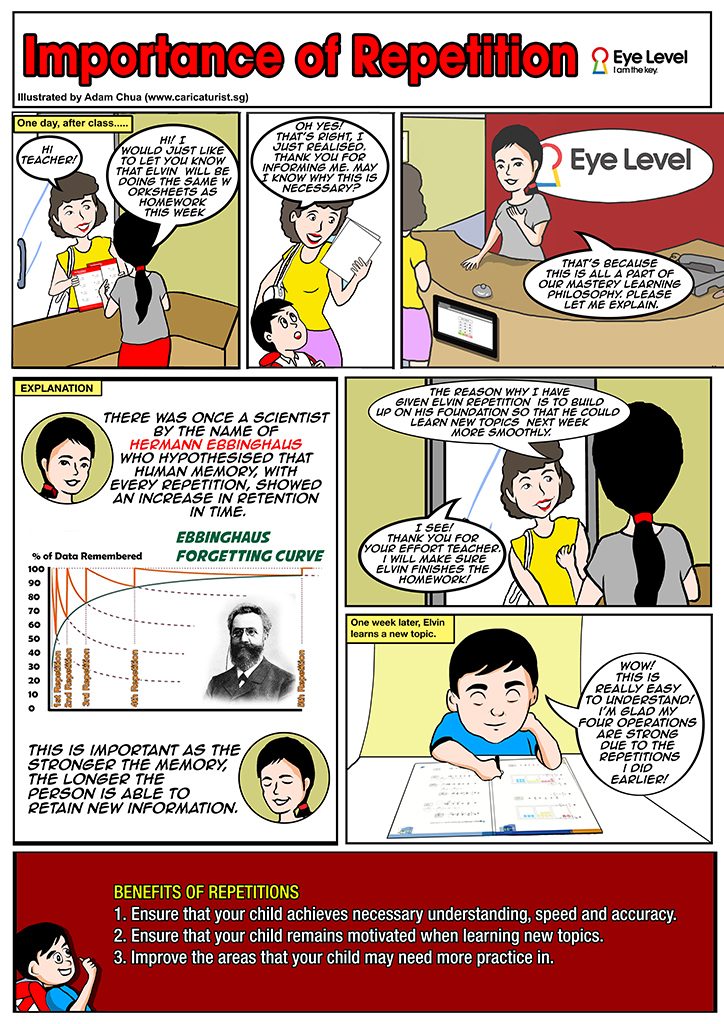
Benefits of Repetitions
* Ensure that your child achieves necessary understanding, speed and accuracy.
* Ensure that your child remains motivated when learning new topics.
* Improve the areas that your child may need more practice in.

Benefits of Repetitions
* Ensure that your child achieves necessary understanding, speed and accuracy.
* Ensure that your child remains motivated when learning new topics.
* Improve the areas that your child may need more practice in.
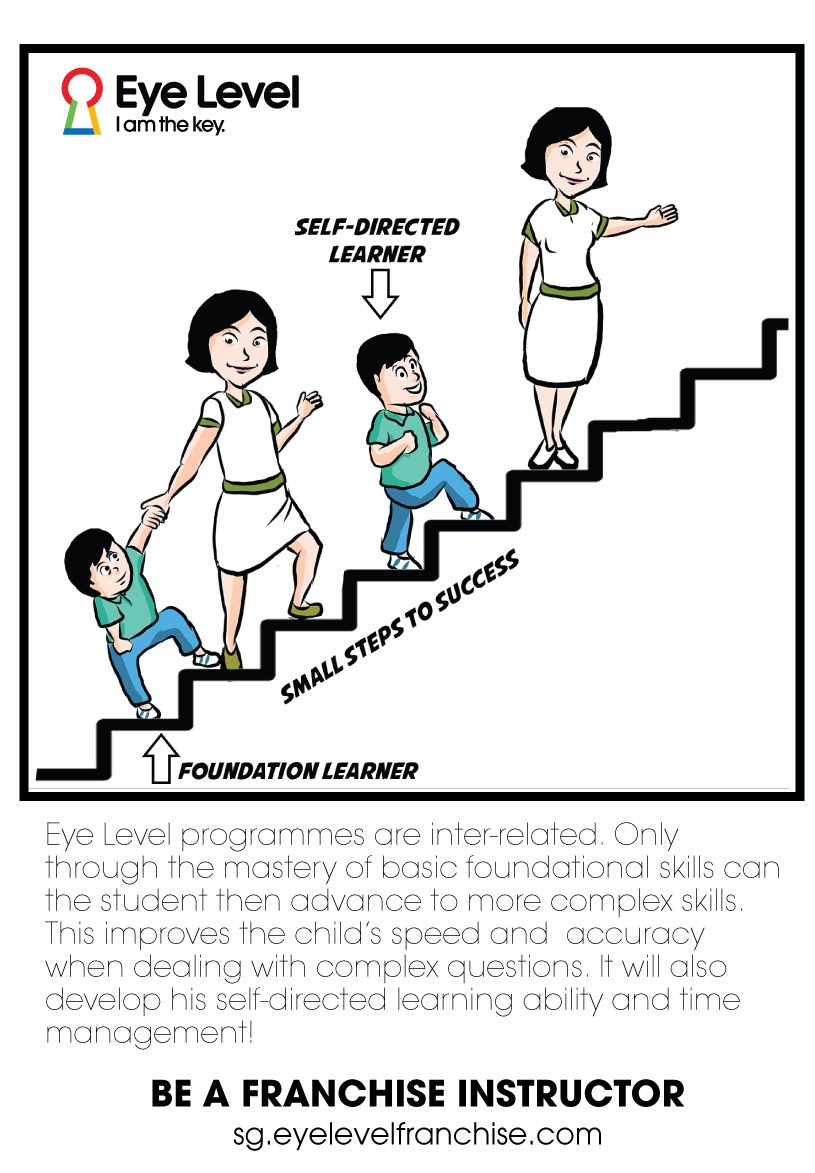
Eye Level focuses on building each student’s foundation in Math and English, as well as helping students gain Self Confidence, Interest in Learning, and develops a child’s Critical Thinking and Analytical skills.
Eye Level programmes are inter-related. Only through the mastery of basic foundational skills can the student then advance to more complex skills. This improves the child’s speed and accuracy when dealing with complex questions. It will also develop his Self-Directed Learning ability, independence as we as time management.
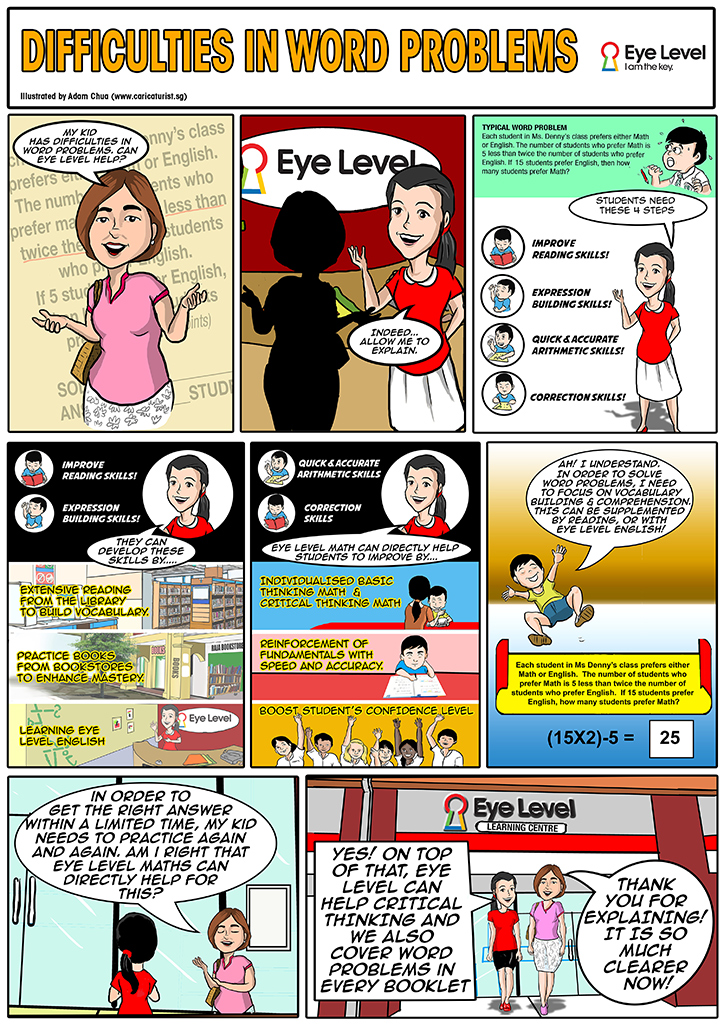
Development of Mathematical Thinking
Eye Level Basic Thinking Math enables students to complete the foundation of mathematics and covers the following study areas: Numbers, Arithmetic, Measurement, and Equations.
Eye Level Critical Thinking Math enables students to develop depth perception, problem solving, reasoning skills, and covers the following study areas: Patterns and Relationships, Geometry, Measurement, Problem Solving, and Reasoning.
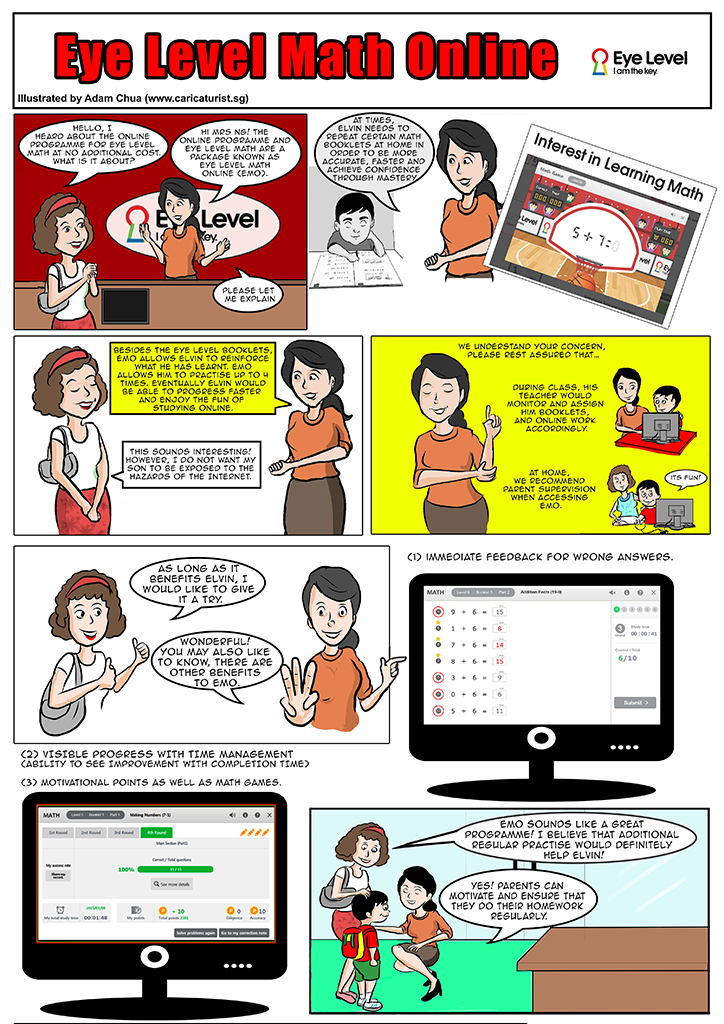
The Eye Level Math Online is designed for our level 5 to 12 students. It brings a new positive dimension to developing strong Math Skills in them.
– Mastery learning with Basic Thinking Math repetition
– Maximization of motivation by online program
– Maximization of learning effect by using auto
scoring and instant feedback system
– Arithmetic game activity
– Easy access on accumulated records
– Simultaneous learning of Basic Thinking Math & Critical Thinking Math
– Learning of new concepts
– Improvement of problem solving skill with various
supplementary materials
– Well systemized assessment
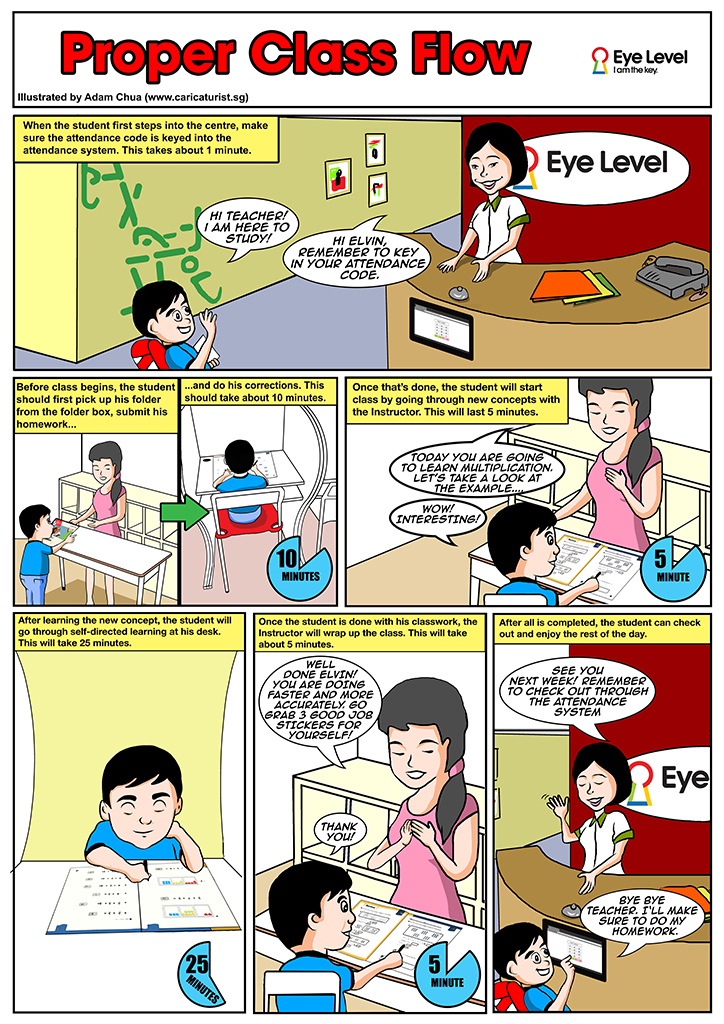
Eye Level is a self-directed learning program which encourages students to acquire self-motivation and independence.
1. Diagnostic test and Starting point
After the diagnostic test, the instructor measures the strengths and weaknesses of the student as well as evaluating the student’s ability. The instructor will determine the child’s starting point, which is where a student can work with ease and confidence.
2. Self-directed learning
Students will follow a self-directed learning method as well as develop independent learning skills in our Eye Level learning centers. Instructors will provide guidance to students as they move throughout their individualized program.
3. Assessment
Before moving on the next level, Eye Level instructor will give a Level Test to evaluate whether the student has achieved mastery.
4. Feedback
Instructors provide consultation and communicate with parents regarding their children’s learning progress on a regular basis.
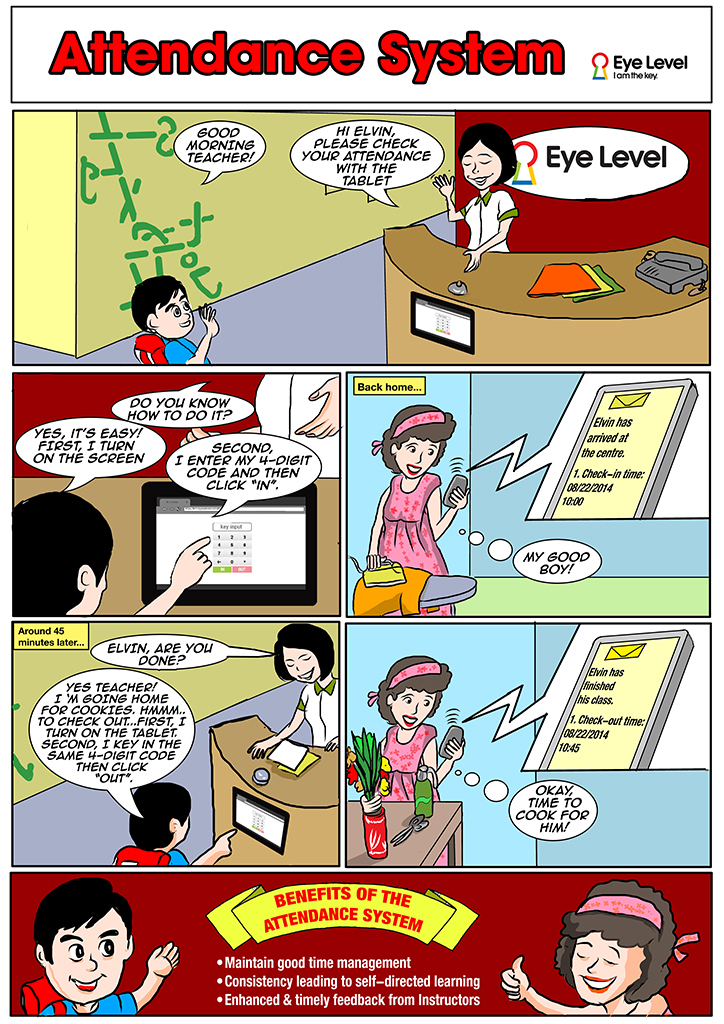
* Maintain good time management
* Consistency leading to self-directed learning
* Enhanced & timely feedback from Instructors
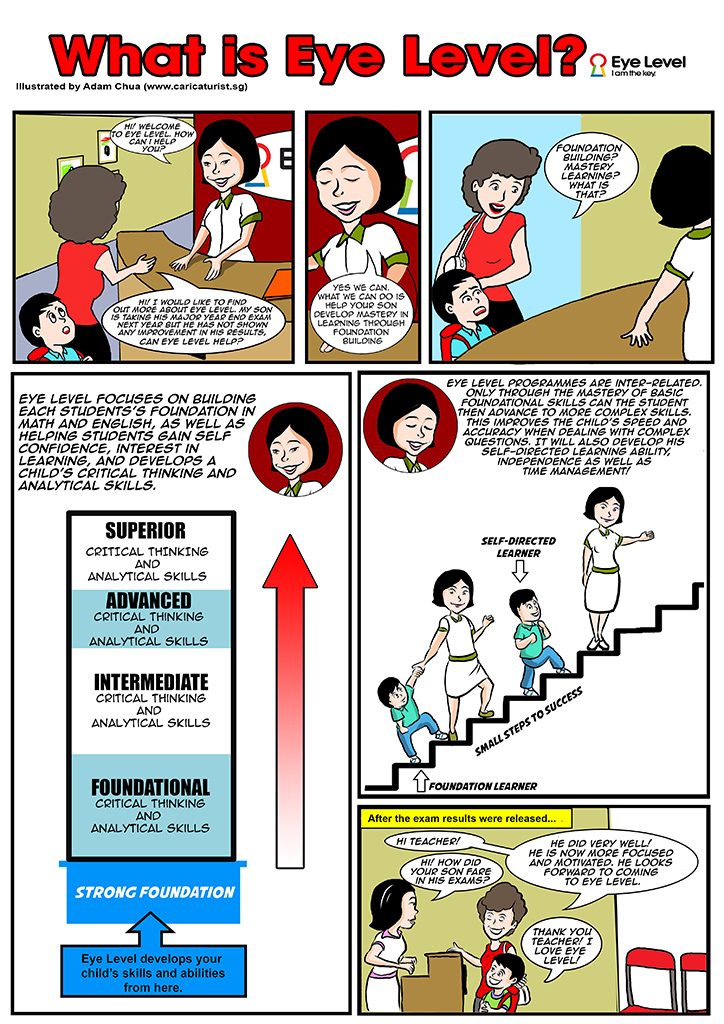
Eye Level focuses on building each student’s foundation in Math and English, as well as helping students gain Self Confidence, Interest in Learning, and develops a child’s Critical Thinking and Analytical skills.
Eye Level programmes are inter-related. Only through the mastery of basic foundational skills can the student then advance to more complex skills. This improves the child’s speed and accuracy when dealing with complex questions. It will also develop his Self-Directed Learning ability, independence as we as time management.
The debate about which is more important, reading fluency or grammar accuracy, is a long standing one. Such is a chicken or the egg problem, which unfortunately, Critical Thinking Mathematics will not help.

Traditional educators would argue that a child develops its ability to form grammatically correct sentences by imparting technical knowledge such as the recognition and usage of verbs, nouns, punctuations and tenses. On the other side of the fence, the liberal educators would stand by their pedagogy that fluency would help with a child’s understanding of meaning and context.
However, it is truly the case that one method is more superior than another? According a research in cognitive psychology, the brain is divided into different areas. The area that focuses on grammatical processing is known as the Broca’s area, a small part of the left frontal lobe. Its general function includes language comprehension, action recognition and production, and speech-associated gestures, such as using sign languages.
Learning language fluency, however, triggers the whole frontal lobe, which has also been linked to executive functions, such as attentional control, working memory, reasoning and problem-solving.
So, which is truly more important? Perhaps there isn’t a strictly correct answer. Perhaps both arguments are correct. Non-native learners would benefit more with the study of grammar as it taps on a smaller part of the brain. This would progress towards a fuller understanding and comprehension of the language as they develop larger parts of the frontal lobe later. Native learners, on the other hand, benefit by first understanding context and meaning as these help them form meaningful relationships with others, which also develops the self-identity of the child. They would then work towards refining their understanding of the language through the study of grammar. Either way, both go hand-in-hand and are equally critical to the study of a language.
On a side note, scientists have researched and determined that the chicken did come first. Mindblown!

What is Critical Thinking?
Critical thinkers – these are people that our nation wants to nurture, companies want to hire, and parents want their children to become. With the term bounced around so often, it is no wonder that progressive enrichment organisations are starting to adopt “Critical Thinking” as part of their regular programmes.
Often confused with a “CREATIVE thinker”, a critical thinker leverages on experience, observation, reflection and/or communication to derive at a set of heuristics (i.e. a process or method). While the creative thinker aims to derive an original/fresh solution, the process or method of thinking the critical thinker uses is often situational and relevant to the question at hand, and would thus allow the decision maker to derive at a logical solution.
Importance of Critical Thinking
Critical thinking is an important skill to have as the modern world progresses. According to a research by Hong Kong University (HKU), critical thinking is critical (pardon the pun) because:
So, do we need it?
Short answer – YES! This is especially true in the context of Singapore where we are often thought of as being book smart and not street smart. As such, critical thinking will not only break the notion that the Singapore education system is all about rote learning, it will also allow us to tap on the knowledge that we have learnt and apply it rationally in a variety of settings. This makes us effective individuals and contributors of our society.
“I was wondering how my students would enjoy the paintings from a student’s eye level.”
This is a story about a teacher who changed his perspective. A man was appreciating the art at the Smithsonian Museum in Washington DC. As he approached each painting he would kneel down and look up at it. A curious visitor asked him why he was looking at the painting from his knees. He replied, “I am an elementary school teacher and I will bring my students here tomorrow. I was wondering how my students would enjoy the paintings from down here. I am trying to appreciate these paintings from a student’s eye level.”
Eye Level is based on an educational principle where students learn at their own pace. When the instructor understands the learning needs of a student, the teaching are most effective.